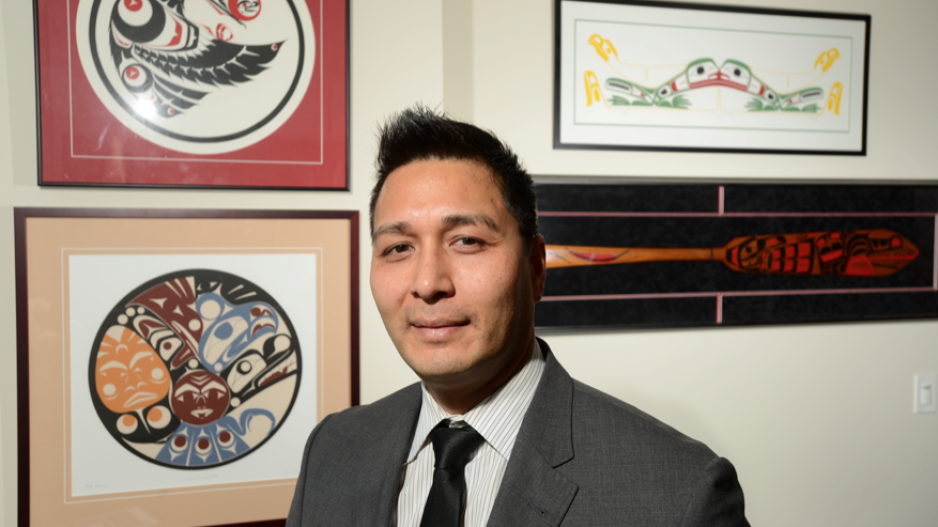Delwen Stander has been vacationing in Osoyoos since 1980, but he made it his home away from home in 2007 when he and his wife bought a quarter share of a lease at the Osoyoos Indian Band’s (OIB) Spirit Ridge resort for $600,000.
“It’s glorious to escape the rains,” said Stander, a Chilliwack lawyer. “It’s an absolutely gorgeous place.”
The last few years, however, have been less than idyllic. Stander is also vice-president of the Spirit Ridge Owners’ Association (SROA), which struggled with Calgary-based developer Bellstar, the OIB’s majority partner, to transfer the head lease and replace Bellstar as the rental and property management company.
“It should be a cautionary tale for any potential investor who is thinking of buying an interest on First Nations land,” Stander said.
The title to reserve land under the Indian Act is held by the federal or provincial Crown, not the First Nation.
The two-phase, 226-condo resort development was completed between 2005 and 2009 and generated $80 million in sales. After each phase, the head leases for common areas – which include a convention centre, restaurant and accommodation check-in – were supposed to be transferred to SROA. By 2012, SROA lost patience with Bellstar and grew dissatisfied with service from the Bellstar divisions that held separate 10-year property and rental management agreements.
“We just weren’t … getting the level of quality care of our property we thought we were entitled to and what would be good for the resort, and that triggered the cancellation of the property management contract,” Stander said.
In 2014, three-quarters of the 440 independent owners voted to end that deal with Bellstar. The same happened in 2015 for the rental pact. SROA and Bellstar’s on-and-off talks in 2015 resulted in Bellstar’s closure of the common areas on January 27, putting Spirit Ridge’s conventions and weddings bookings in jeopardy.
“We have people that come back every year because they love it so much,” Stander said, “and we want to make sure that we keep those people coming back.”
Bellstar CEO Dale Hodgson did not respond to an interview request, but his office sent a prepared statement that said a jointly commissioned professional appraisal valued the commercial assets at $3 million. Hodgson’s statement said SROA’s offers of $1.8 million and $2.2 million were “accompanied by unacceptable terms.”
“Despite our sincere desire to come to an agreement in a formal matter, this has not been achieved,” he said in a statement on March 4.
Stander said SROA finally agreed March 8 to acquire the commercial assets, thus returning access to the lodge, conference centre and beachfront. The head leases should be transferred by summer.
“We’re fully open for business again,” Stander said.
Stander and SROA, however, remains unhappy with the lack of federal government support.
“You cannot rely on the federal government to step in and rectify a breach of a head lease,” he said. “We thought that there was no way that the head leaseholder, the federal government, on behalf of the band, would allow those buildings to go dark.”
Stander said the best way to prevent disputes over management of aboriginal land would be for the federal government to allow fee-simple ownership.
“Why should a First Nations band, like Osoyoos Indian Band, go to the federal government to get permission to do things with their land at all?” he asked.
Richard Horne, manager of lands operations at the Indigenous and Northern Affairs Canada office in Vancouver, declined comment and referred BIV to the media relations office. Spokeswoman Madi Carlea said that the department can review concerns, but it encourages parties to negotiate solutions. Under the Indian Act, she said, the department helps First Nations preparing reserve land for economic development through the designation and leasing process, and by granting leases and permits for use of reserve lands and administering the leases and permits as lessor.
“First Nations structure their own business relationships with developers to sell or lease residential or resort real estate on reserve lands,” Carlea said. “The structure and nature of these business relationships depend on the proposed business opportunity.”
Merle Alexander, leader of the aboriginal law group at Gowling WLG, said the Osoyoos situation “has much more to do with the players, of Bellstar, and the particular structure of these leasehold interests.”
Alexander points to the Tsleil-Waututh Nation’s Raven Woods development in North Vancouver as an example of a First Nations real estate development and lease arrangement that works well. (See story, page B3.)
Meanwhile, in south Vancouver, 75 leaseholders are taking the Musqueam Indian Band to Federal Court after the band announced last year it was hiking leases to $80,000 from $10,000 a year. A previous proposed increase, to $36,000 from $400 a year, was capped by the Supreme Court of Canada at $10,000 in 1995.




